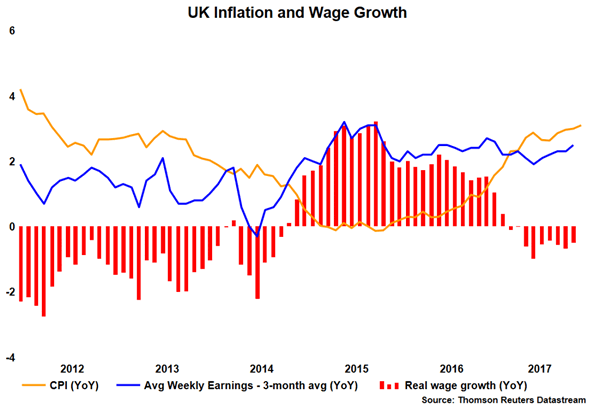Sterling staged a modest recovery in 2017, on the back of a rate hike by the Bank of England and some noteworthy, albeit slow, progress in the Brexit talks. Even though monetary policy has been supporting the currency in recent months, it is an open question whether this will remain the case moving forward. Moreover, the Brexit negotiations have only just entered their second and perhaps most crucial phase, where the two sides will discuss the all-important trading relationship. Numerous political uncertainties persist, and until the smoke clears, one could argue that any rallies in the pound may remain relatively limited.
Despite a plethora of uncertainties emanating from both politics and economics, 2017 was a kind year for the British pound, with the currency outperforming most of its major peers, besides the almighty euro. Sterling’s gains were particularly visible against the wounded US dollar, with sterling/dollar trading in an uptrend for practically the entire year. What was the catalyst behind the currency’s rally, and is it likely to continue into 2018?
In terms of monetary policy, the Bank of England (BoE) raised its benchmark interest rate by 25 basis points for the first time in a decade, and provided signals of more to come, albeit at a gradual pace. At the time of writing, markets have fully priced in another quarter-point rate increase by year-end 2018, according to the UK overnight index swaps. Thus, the key question for sterling now is whether the BoE will deliver more, or fewer hikes than what is currently expected.
Looking at UK economic data, policymakers have little reason to raise rates aggressively. Inflation has accelerated, but wages have not, keeping real wage growth negative. This in turn, has been weighing on private consumption, something evident by the weakening trend in retail sales, resulting in a slowdown in broader economic growth. Rapid policy normalization could make a bad situation even worse, as it would likely depress wages further. Furthermore, the Bank also has the Brexit negotiations to consider, and the fact that the future EU-UK trading relationship remains largely an unknown. Unless both inflation and wages begin to surprise to the upside relative to the BoE’s own forecasts, it is difficult to envisage a scenario where policymakers hike rates twice or more in 2018, as that would potentially entail more risks than benefits to the UK economy. Therefore, the risks surrounding sterling from monetary policy in 2018 may be tilted to the downside, with the BoE more likely to either meet market expectations for one quarter-point rate hike, or perhaps disappoint and not hike at all.

Turning to politics, 2017 was a bumpy year for the pound, with the snap election called by Theresa May resulting in a hung parliament, and the continued headlines around Brexit providing ample of volatility to keep GBP traders busy. After several delays in the Brexit talks, the two sides finally managed to reach a consensus on the first issue at hand; the divorce terms. Now, the negotiations can finally move on to phase two, which will deal with the future EU-UK relationship and the all-important subject of trade.
While the fact that the talks are moving forward is a positive development for sterling, one must highlight that this process has already been substantially delayed on what should have been a relatively simple matter to settle in the divorce terms. The inability of the two sides to agree on the terms in a timely manner suggests that when we do begin to discuss trade, we may encounter fresh setbacks and disappointments there, especially considering the more complex nature of the subject. The longer the overall process is delayed, the higher the likelihood that business uncertainties may begin to translate into weaker business investment and thus, slower economic growth. Moreover, it is paramount to note that the UK government is under pressure domestically as well, with the lack of a majority in Parliament and the constant "rebellions" within the Conservative Party undermining Theresa May’s political capital and negotiating power.

Bearing all the above in mind, the outlook for sterling appears somewhat grim into 2018. One could argue that any rallies in the GBP may remain relatively limited, perhaps until the fog of political uncertainty lifts. The key risk to this view would be material progress in the Brexit process that tips the scale in favor of the pound, such as a breakthrough in trade talks, which appears rather unlikely judging from the lack of headway in the negotiations thus far. Although volatility is likely to remain high, sterling/dollar could finish the year close to the 1.3000 psychological territory, especially if the dollar was to regain some of its shine throughout the year. On the flipside, in the less-likely scenario of material progress being achieved in the Brexit talks, Cable could surge and target the 1.3850 territory, marked by the lows of February 2016.














